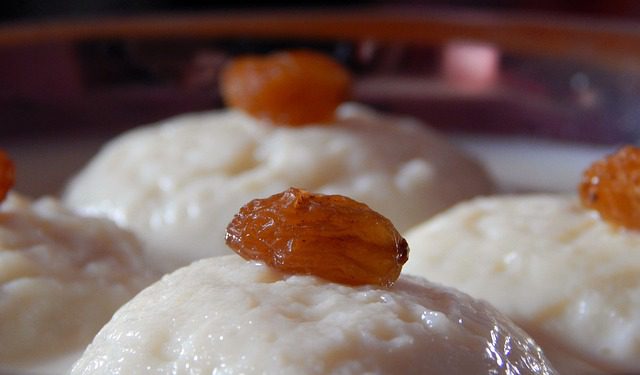We can all unanimously agree that biting into a gooey syrupy Bengali Sweet will transport you into a dessert heaven. Bengali cuisine is dominated by delectable fish curries, Jhal muri with a pungent kick of mustard oil and of course a never ending list of Bengali Sweets (Mishti). Even if a spongy rasgulla, a velvety mishti doi or a mouth melting sandesh remains unparalleled for you, there is such a vast variety of Bengali sweets that it can become hard to choose.
A lot of Bengali sweets are dominated by one key ingredient – Chenna or home made cottage cheese. Some Bengali sweets are associated with specific festivals while some desserts are enjoyed throughout the year. For example, Nolen Gurer Payesh is made specifically for Makar Sakranti (Poush Sankranti) and needless to say the iconic Rosogollas don’t need an occasion to be relished.
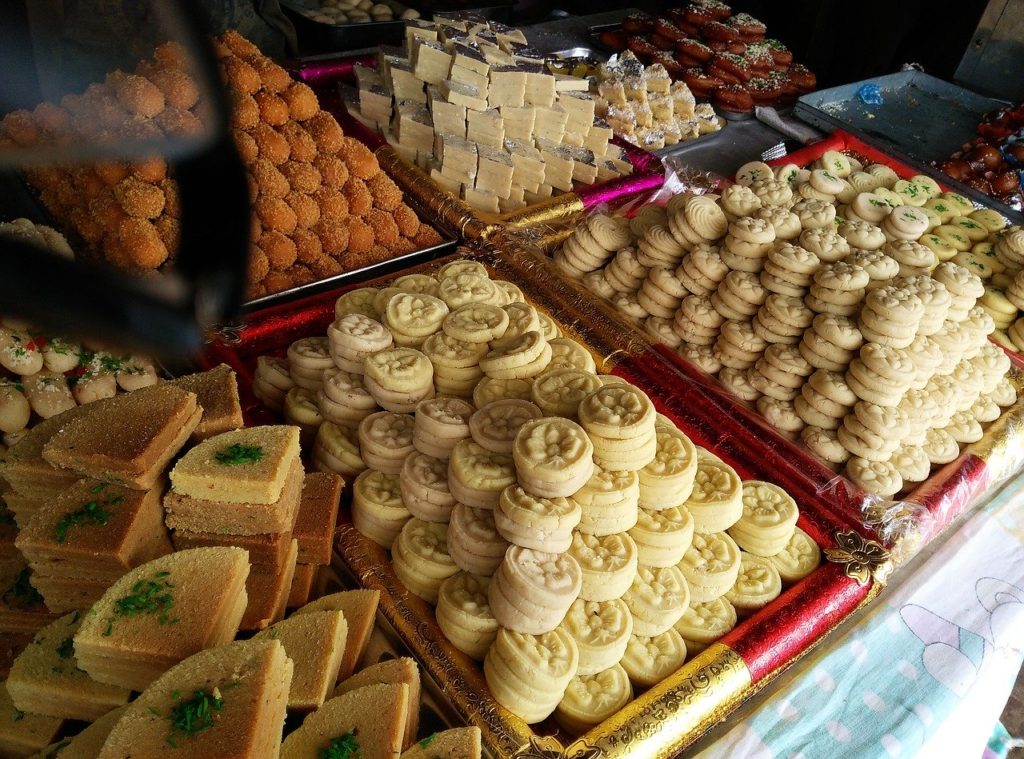
Table of Contents
20 Bengali Sweets You Must Try
We made a mistake. We asked our Bengali co-worker about her favorite Bengali Sweet. After taking 1000000 million light years, she still couldn’t land on a definitive answer and by then we all had finished the box of the delicious Sandesh she had gotten for us from her home. We listed out some of the most popular and tasty Bengali sweets that you must try.
Disclaimer – We are not responsible for the massive cravings this post will cause. Proceed with caution. Don’t say we didn’t warn you!
1) Patishapta | Bengali Crepes
A wonderful home made delight, Patishapta is a crepe like Bengali sweet dish made with refined flour, rice flour and semolina with a hint of cardamom. These crepes are stuffed with a coconut and jaggery filling. Some patishapta recipes use date sugar to add sweetness. These pancake rolls should be consumed when warm otherwise the coconut and jaggery filling will dry out and wouldn’t be as pleasant to eat. Every household has a few special ingredients that they add to the dish to make their recipe stand out.
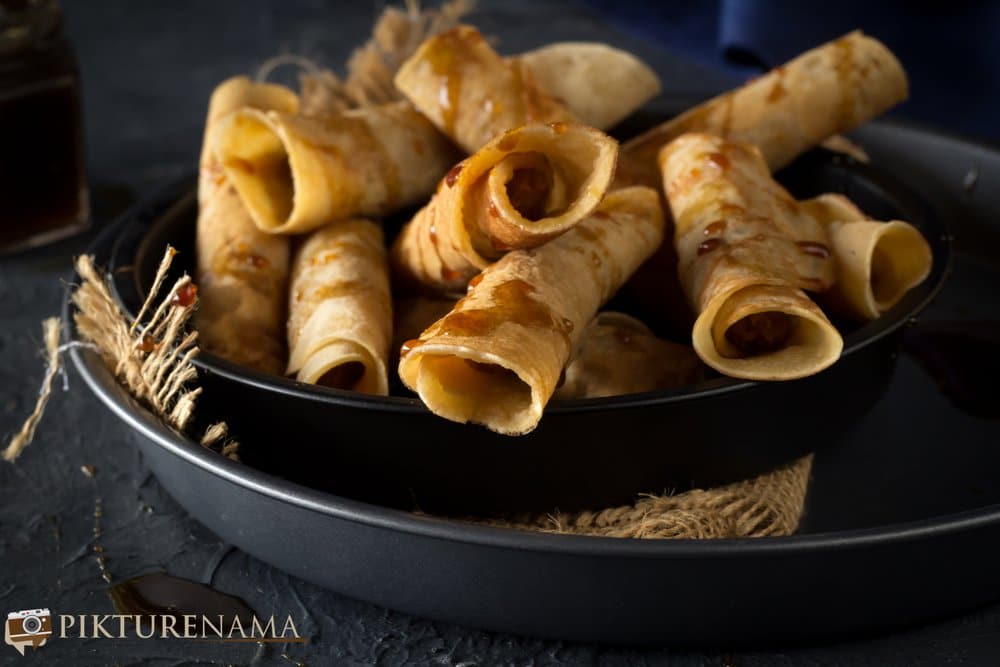
2) Ledikeni | A Popular Bengali Sweet
Well, this dessert has a very rich historical association. Ledikeni (Lady Kenny) is a Bengali sweet named after Lady Charolette Canning, wife of Lord Charles John Canning. During the British Raj, Bhim Chandra Nag, a famous confectioner in Kolkata, had prepared this sweet for Lady Charolette Canning. She loved it so much that it became a regular on her menu at parties and otherwise. Soon after, the locals started to address the dessert as ‘Ledikeni’ in an attempt to pronounce her name (Lady Canning). Ledikeni is a Bengali sweet made with chenna and dipped in sugar syrup. It is elongated and stuffed with raisins. Have you tasted this Bengali sweet dish?
3) Mishti Doi | Homemade Goodness
How can any Bengali dessert list be complete without the mention of this huge home made star. Mishti Doi is made with full cream boiled milk and jaggery. Sometimes, it is made with khejur gur (date palm jaggery) too. Once the milk is slightly thickened, jaggery is added and then the milk is left to ferment overnight. Many people also add cardamom powder to their mishti doi to lift the flavor. If you are looking to buy mishti doi, off the shelf – we reviewed six brands of mishti doi to find out the best one for you.
4) Bhapa Doi | Steamed Yogurt
Bhapa doi and mishti doi are two very different Bengali sweets. Bhapa doi is steamed yogurt made with hung yogurt and condensed milk. Some people add nuts and cardamom to increase the depth of flavor.
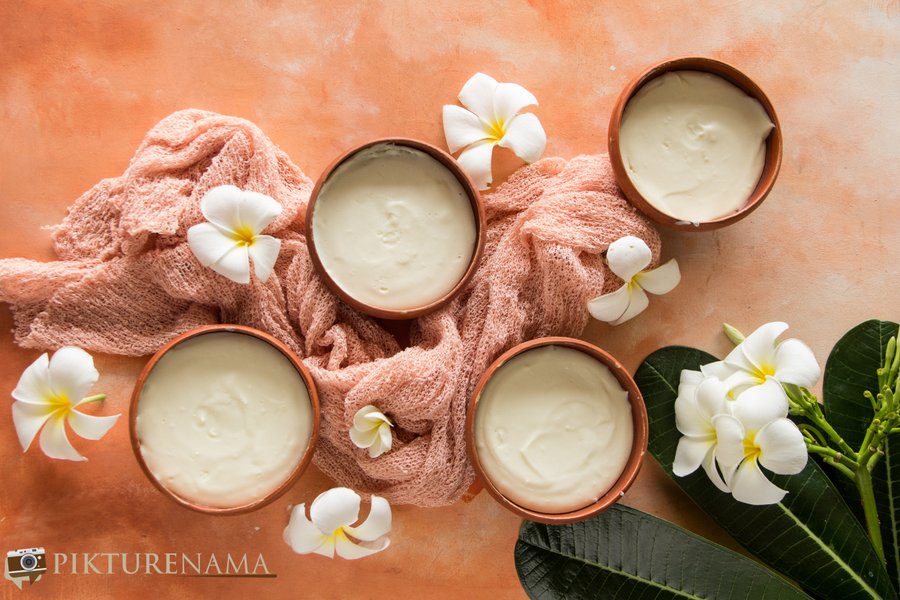
5) Labong Latika | A Deep Fried Traditional Bengali Sweet
Small dough parcels pinned and sealed with cloves is an absolute favorite amongst the crowd. The ‘pastry’/outer covering of the Labong Latika or Lobongo lotika is made with refined flour and stuffed with a heavenly mixture of grated coconut, khoya, nuts and a dash of cardamom. They are then sealed with cloves, hence the name Labong (laung/cloves). It is then deep fried in ghee and dipped in a thick sugar syrup. Labong Latika is usually made during Durga Puja or Makar Sakranti. Oh, is this what heaven feels like?
6) Sandesh | The Evergreen Meetha
Sandesh or Sondesh is so popular in India that bloggers have taken that recipe and turned it into a..errr..gastronomical experience. Chocolate sandesh, tutti fruity sandesh and wait for it..fruit trifle sandesh. Yes, no kidding! But, nothing beats some original melt-in-your-mouth sandesh after a hearty meal. Sandesh is a Bengali mithai made with fresh cottage cheese (chenna) and sugar. There are a lot of Sandesh variations that are quite popular like mango sandesh and saffron sandesh.
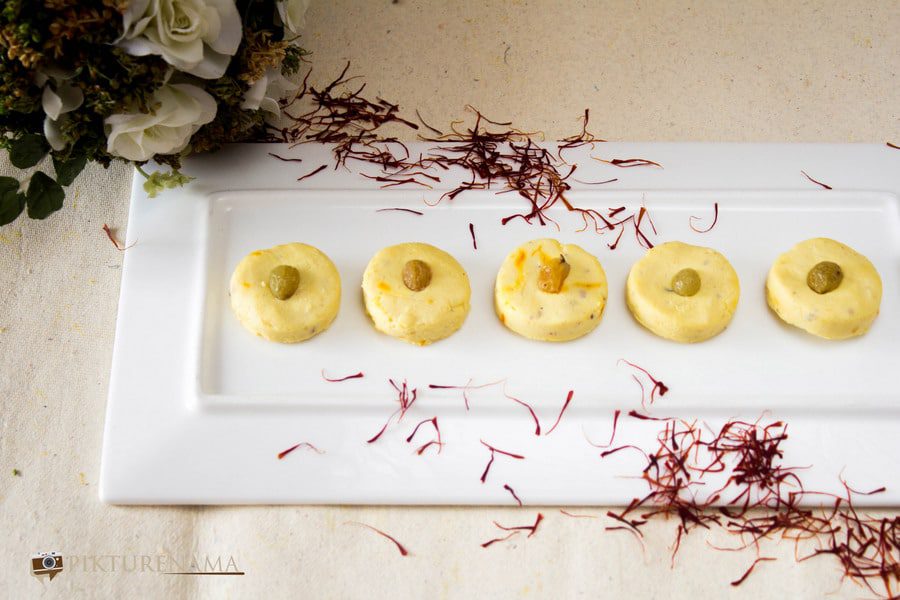
7) Nolen Gurer Sandesh (Sondesh)
Nolen Gurer Sondesh is a delicious melt-in-your mouth Bengali sweet made with chenna and date palm jaggery. Bengali desserts made with Nolen Gur (date palm jaggery) are relished throughout the winter season.
8) Chhanar Jilipi | Bengali Paneer Jalebi
Chhanar Jilipi is also known as Paneer Jalebi in the Northern belt. A famous Bengali sweet made with freshly made cottage cheese, flour and sugar. Dunked in a thick sugar syrup, Chhanar Jilipi is so delicious that we are already salivating.
9) Payesh | Bengali Rice Pudding
Payesh is a Bengali rice pudding which is very similar to Kheer. Payesh is generally made on special festivals and auspicious occasions. Soaked rice mixed with a tablespoon of ghee and cooked in full fat milk, sugar and cardamom. Topped with nuts like almonds, pistachios and raisins, Payesh ensures a creamy end to the meal. A different version of the Payesh is consumed during winters called as Nolen Gurer Payesh which is made with jaggery instead of sugar.
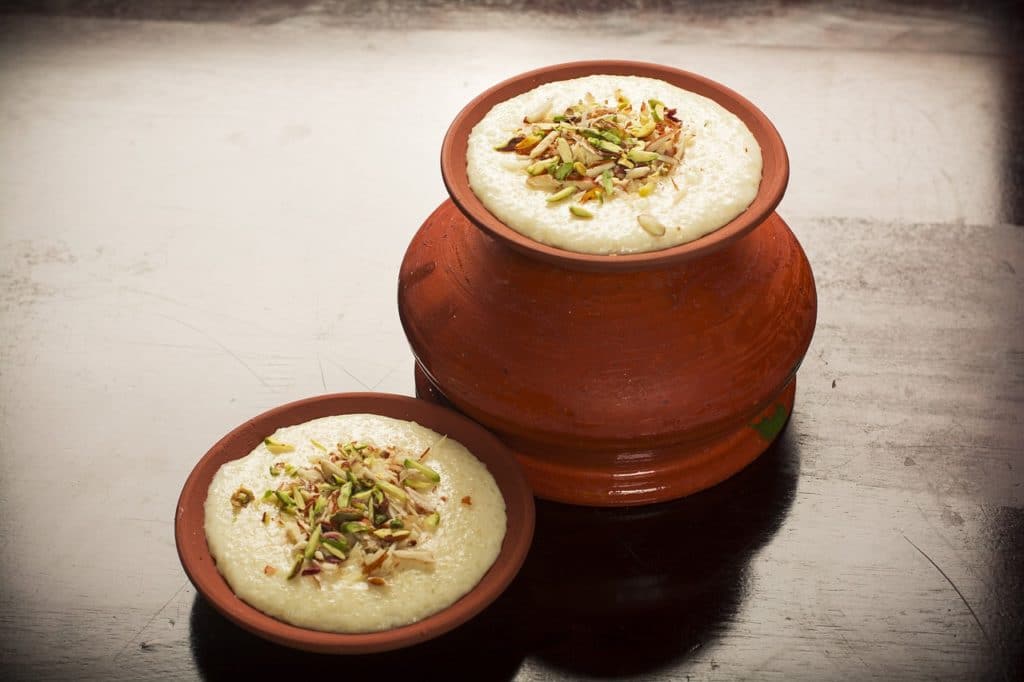
10) Cham Cham | Coconut-y deliciousness
Cham Cham or Chom Chom is a delectable Indian sweet made with chenna. They can be pastel colored or plain white. Once the oblong sweets are cooked in a water bath and have doubled up in size, they are slit open and stuffed with a mixture of khoya, sugar and dry fruits. Rolled in desiccated coconut, cham cham can be enjoyed after being refrigerated.
11) Rasgulla | The Classic Bengali Sweet
Rasgullas or Rosogullas – The mega star of Bengali Sweets is popular worldwide and enjoyed by children and adults alike. The dripping of the syrup on your face while trying to have one is so satisfactory even if you look ridiculous doing it.
Rasgullas are made with two key ingredients – chenna (curdled milk) and sugar. Some like to add rose water to the syrup, while some add kewra essence to it. Spongy rasgullas are aptly rated and well, let’s just say, you just can’t have one! Rasgullas can be eaten hot or cold, even though cold ones are much preferred around the country. Different versions of the popular rasgullas are sold around the country adjusting to their dietary needs – some are sugar free and some made with low fat milk too.
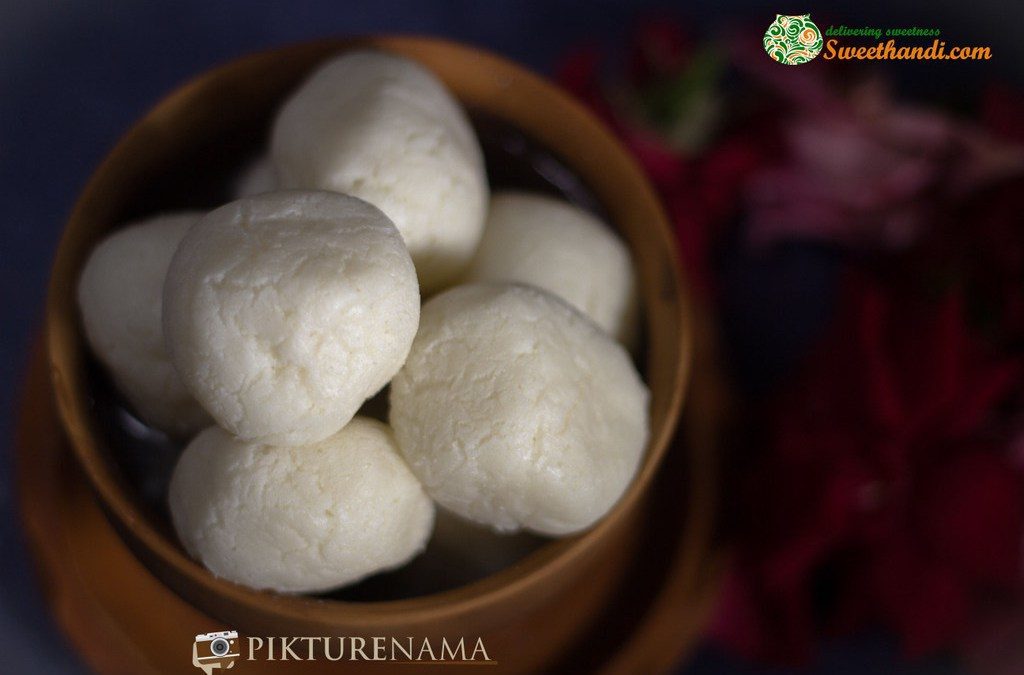
12) Kheer Kadam | Stuffed Bengali Sweets
Kheer Kadam is a Bengali mithai with layers and layers of deliciousness. Kheer Kadam, also known as Raskadam, is a Bengali sweet where a mini rasgulla is encased in a khoya base. So when you bite into it, the lovely sweetness of the khoya casing meets you first and then a soft rasgulla makes a grand entry. Kheer Kadam is as exotic as it sounds.
13) Sitabhog | A Fried Chenna Dessert
Is it rice? Is it vermicelli? No, it’s Sitabhog. Sitabhog is a traditional Bengali sweet from Burdwan, West Bengal and is made with chenna or cottage cheese, rice flour and sugar. It is served with small gulab jamuns. It is often confused with cooked white sweetened rice or dry vermicelli. Sitabhog is also accompanied with Mihidana sometimes.
14) Mihidana | Bengali Boondi
Mihidana is a popular Bengali sweet from Burdwan, West Bengal. It is a finer version of the regular boondi that we often find in the Northern parts of the country. Mihidana is made with gram flour (besan) and fried in ghee or oil on a low flame. Then, it is dipped in a yellow colored sugar syrup. Mihidana is often served with Sitabhog.
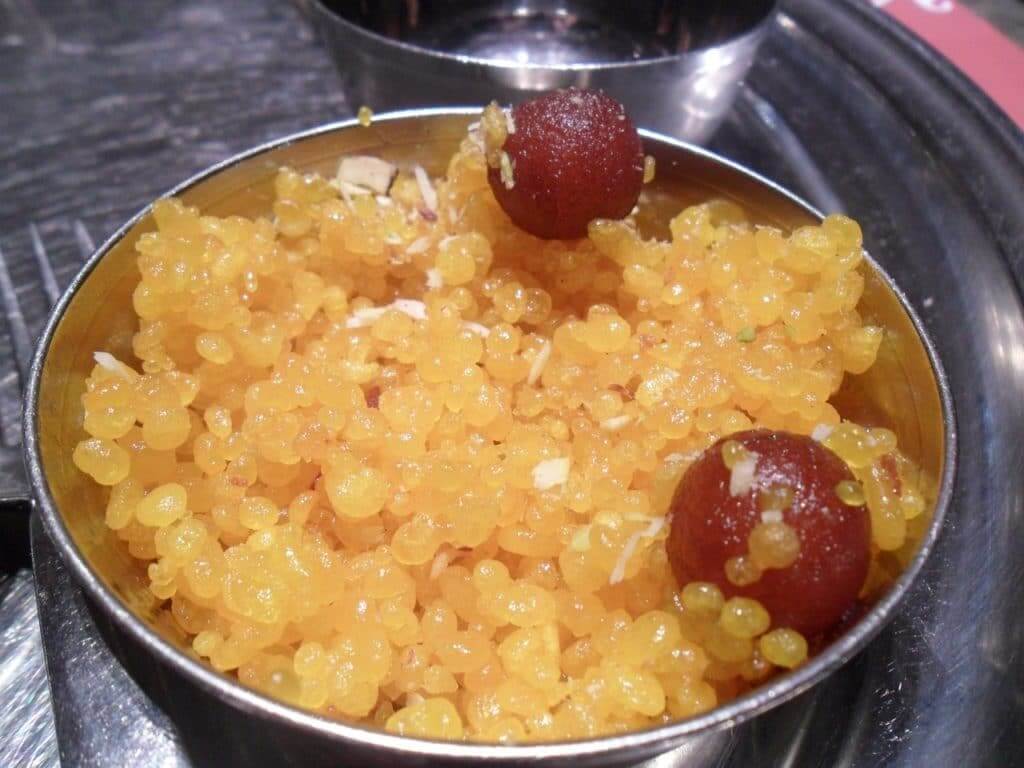
15) Rajbhog | Rasgulla’s Rich Cousin
Rajbhogs are made with chenna, stuffed with dry fruits and dipped in a saffron infused rich syrup. The basic difference between a rajbhog and a rasgulla is the color, the stuffing and the overall flavor. Rajbhog is an upgrade to the good old rasgulla with infusion of rich ingredients like dry fruits and saffron.
16) Darbesh | Bengali Style Boondi Ladoo
Darbesh is Bengal’s version of moti boondi ke laddoo commonly available in India. Unlike Mihidana, the boondi used to make Darbesh is not fine. Often, green and red food coloring is used to bring some color into Darbesh. Topped with some nuts, this is a yummy Bengali sweet to binge on.
17) Kacha Gola | Bengali Cottage Cheese Balls
Kacha Gola is a Bengali sweet made with freshly made Chenna which is flavored with cardamom and saffron. It is a mild and beautifully fresh dessert. Kacha gola is one of the quickest Bengali sweet to make at home if you are craving some.
18) Narkel Naru | Bengali Coconut Ladoo
Narkel Naru are coconut ladoos which are very popular in Bengali cuisine. These laddoos are made with freshly grated coconut, some ghee and sugar. During winters, the Narkel Narus are made with jaggery too. Pop one and you’ll know why these are such a loved Bengali sweet. This sweet dish can be easily made at home, and the sugar levels can be adjusted according to your preferences too.
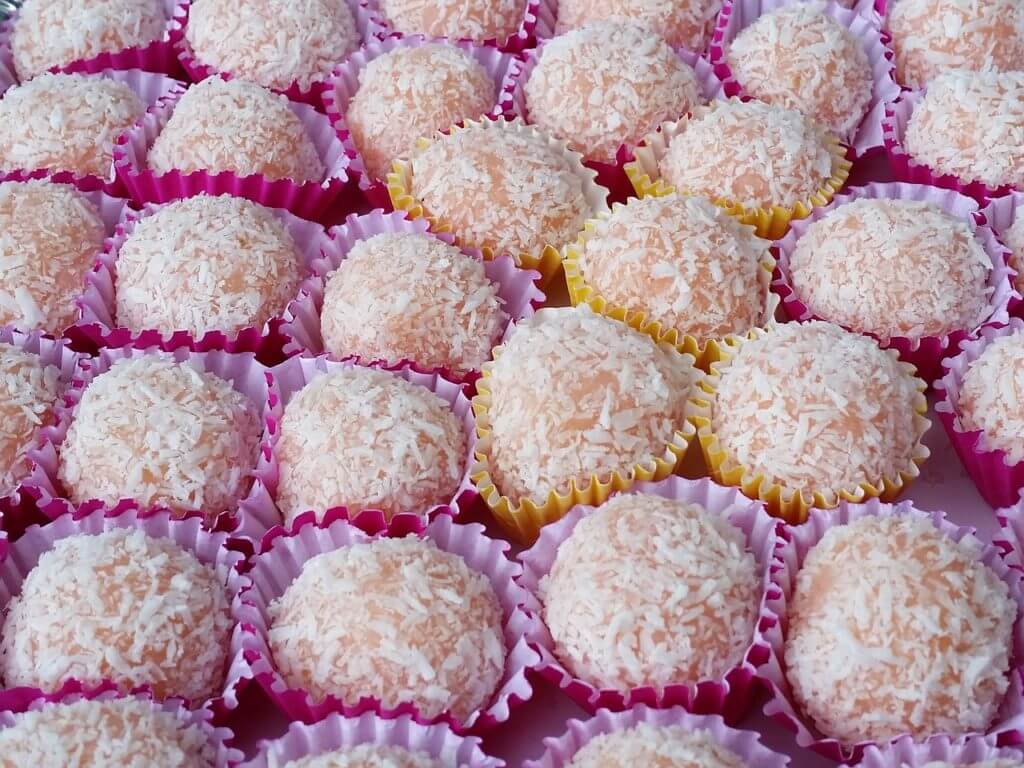
19) Sarbhaja or Shor Bhaja
Even if Shor bhaja is not an easily available Bengali sweet, it is a must try if you can get your hands on it. Shor bhaja is made with full cream milk or milk with a high fat content. Once it reduces, layers of milk cream are set, fried and dipped in a sugar syrup. The fried layers of the shor bhaja stick to each other and form an indulgent mishti. Yes, it is as sinful as it sounds.
20) Pantua | Gulab Jamun’s Doppelganger
Even though most people confuse it with the good old gulab jamun, that is not the case. The base for a Pantua is made with chenna, refined flour, semolina, ghee and sugar. It is then deep fried till golden and dipped in a sugar syrup. This sweet dish can be served hot or cold. Oh, yum yum!
Frequently Asked Questions
Here are some interesting FAQs on Bengali Sweets :
1. What are the top 20 Bengali sweets?
Some of the top 20 Bengali sweets include Rasgulla, Sandesh, Mishti Doi, Rasmalai, Cham Cham, Pantua, Chomchom, Kalojam, Rajbhog, Langcha, Malai Chom Chom, Sarpuria, Sarbhaja, Kheer Kadam, Malpua, Pati Shapta, Chhanar Jilipi, Bhapa Doi, Rosogolla, and Gulab Jamun.
2. What makes Bengali sweets unique?
Bengali sweets are unique due to their distinct use of ingredients like chhena (a form of cheese), khoya (reduced milk), and nolen gur (date palm jaggery). These sweets often have a delicate texture and are soaked in sugar syrup or flavored with cardamom, saffron, or rose water, offering a rich and aromatic experience.
3. Are Bengali sweets suitable for vegetarians?
Yes, most Bengali sweets are suitable for vegetarians as they are primarily made from dairy products like milk, chhena, and khoya, along with ingredients like flour, sugar, and flavorings. However, it’s always advisable to check the ingredients list or inquire with the sweet shop to ensure there are no non-vegetarian additives.
4. How should Bengali sweets be stored?
Bengali sweets are best stored in a cool, dry place away from direct sunlight. They can be kept at room temperature for a day or two, but for longer storage, it’s recommended to refrigerate them. Some sweets, like Sandesh and Mishti Doi, should be consumed within a few days for the best taste and texture.
5. Can Bengali sweets be ordered online?
Yes, many sweet shops and confectioneries in Bengal offer online ordering and delivery services for their authentic Bengali sweets. Additionally, there are various online platforms and e-commerce websites specializing in Indian sweets that offer a wide range of Bengali delicacies for delivery across different locations, making it convenient to enjoy these treats anywhere in the world.
Final Words
These were few of the best Bengali sweets that are must try if you have a sweet tooth. If you thing we miss out on any of your favorite Bengali sweets, do drop us a comment below and let us know.

